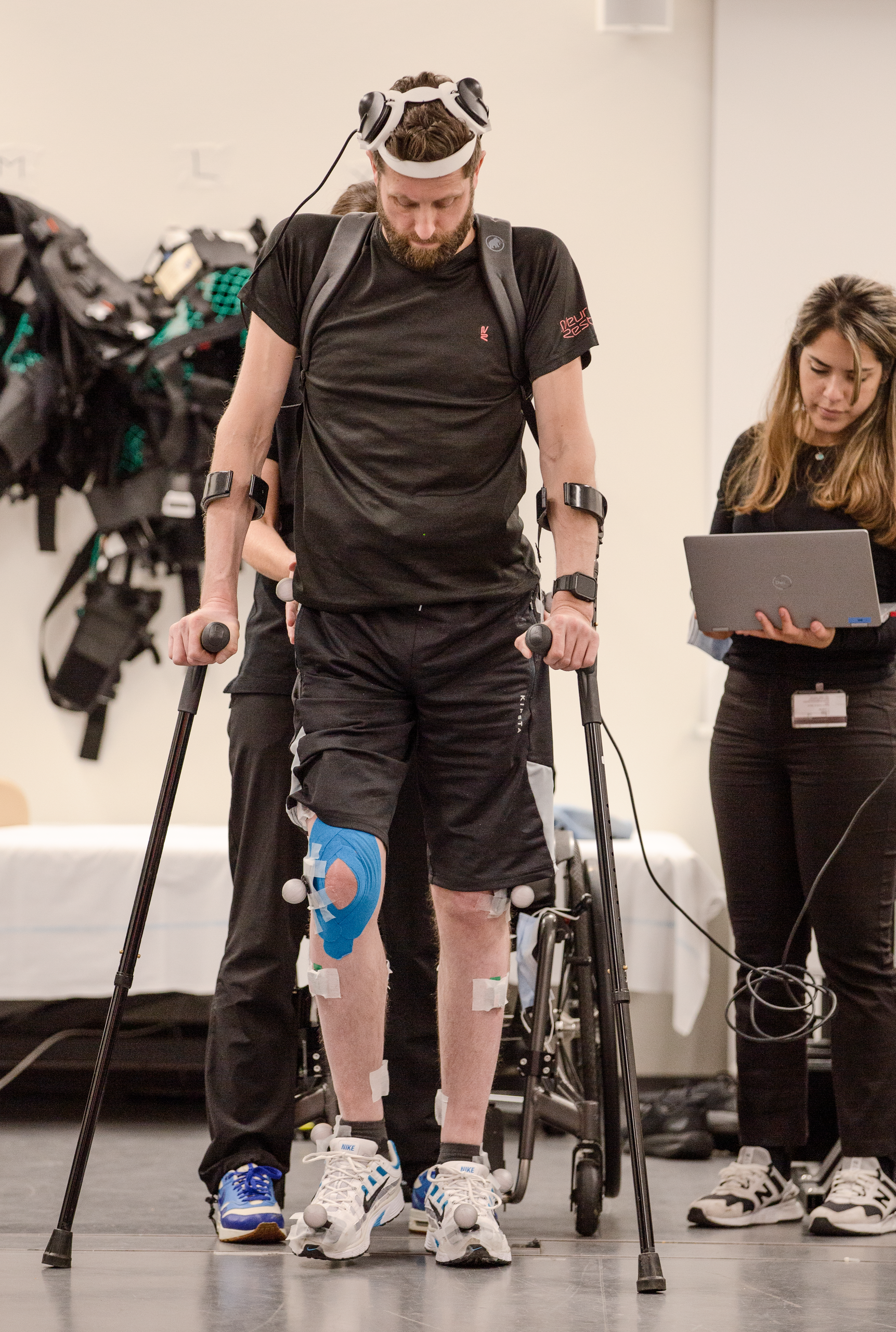
Paralysed man walks again using thought-controlled brain-spine device

A man whose lower body was left completely paralysed after a spinal cord injury can walk naturally, stand and climb stairs thanks to wireless implants and technology that restore communication between his brain and spinal cord, a Swiss-led team of researchers has reported.
Gert-Jan, 40, suffered a spinal cord injury following a bicycle accident that left him paralysed.
“When we met Gert-Jan he was unable to take a step after a severe spinal cord injury. There is an interruption of the communication between the brain and the region of the spinal cord that controls movement of the legs,” explains Jocelyne Bloch of Lausanne University Hospital (CHUV).
To re-establish this communication, scientists in Switzerland have developed a “digital bridge” – a brain-computer interface (BCI) technology – that transforms thoughts into actions.
Electrodes were implanted above the region of the patient’s brain responsible for controlling leg movements. A neurostimulator connected to an electrode array was also placed over the region of the spinal cord that controls leg movement.

The first implants decode the patient’s intention to move and send the information to a device that translates it into stimulation to induce the desired movement, explains Grégoire Courtine, professor of neurosciences at the Swiss Federal Institute of Technology Lausanne (EPFL).
“For the first time this digital bridge will bypass an injury and restore the communication between two regions of the central nervous system that are disconnected,” says Courtine.
Guillaume Charvet, head of the BCI program at CEA, a French government-funded technological research organisation also involved in the project, gives more details: “Thanks to algorithms based on adaptive artificial intelligence methods, movement intentions are decoded in real time from brain recordings. These intentions are then converted into sequences of electrical stimulation of the spinal cord, which in turn activate leg muscles to achieve the desired movement. This digital bridge operates wirelessly, allowing the patient to move around independently.”
The digital bridge enabled Gert-Jan to regain natural control over the movement of his paralysed legs, allowing him to stand, walk, and even climb stairs.
“A few months ago, for the first time after ten years I was able to stand up and have a beer with my friends so that was pretty cool,” he says. “This simple pleasure represents a significant change in my life.”
Rehabilitation supported by the digital bridge enabled him to recover neurological functions that he had lost since his accident. Researchers were able to quantify remarkable improvements in his sensory perceptions and motor skills, even when the digital bridge was switched off, the researchers say. This digital repair of the spinal cord suggests that new nerve connections have developed.
The scientists believe the technology could be adapted to help patients restore arm and hand functions and be used by people who have been paralysed after a stroke.
The research was published in Nature journal. The scientists are continuing further development of the digital bridge and creating a commercial version together with the company ONWARD Medical.

In compliance with the JTI standards
More: SWI swissinfo.ch certified by the Journalism Trust Initiative
















![The four-metre-long painting "Sonntag der Bergbauern" [Sunday of the Mountain Farmers, 1923-24/26] had to be removed by a crane from the German Chancellery in Berlin for the exhibition in Bern.](https://www.swissinfo.ch/content/wp-content/uploads/sites/13/2025/12/01_Pressebild_KirchnerxKirchner.jpg?ver=bb19e376)














You can find an overview of ongoing debates with our journalists here . Please join us!
If you want to start a conversation about a topic raised in this article or want to report factual errors, email us at english@swissinfo.ch.